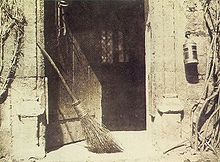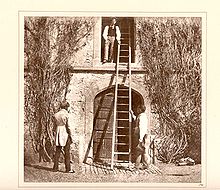
Photography is the art, application, and practice of creating images by recording light, either electronically by means of an image sensor, or chemically by means of a light-sensitive material such as photographic film. It is employed in many fields of science, manufacturing, and business, as well as its more direct uses for art, film and video production, recreational purposes, hobby, and mass communication. A person who makes photographs is called a photographer.

Calotype or talbotype is an early photographic process introduced in 1841 by William Henry Fox Talbot, using paper coated with silver iodide. Paper texture effects in calotype photography limit the ability of this early process to record low contrast details and textures.
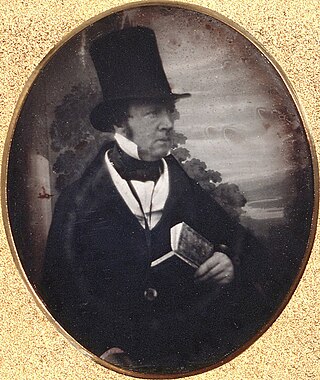
William Henry Fox Talbot FRS FRSE FRAS was an English scientist, inventor, and photography pioneer who invented the salted paper and calotype processes, precursors to photographic processes of the later 19th and 20th centuries. His work in the 1840s on photomechanical reproduction led to the creation of the photoglyphic engraving process, the precursor to photogravure. He was the holder of a controversial patent that affected the early development of commercial photography in Britain. He was also a noted photographer who contributed to the development of photography as an artistic medium. He published The Pencil of Nature (1844–1846), which was illustrated with original salted paper prints from his calotype negatives and made some important early photographs of Oxford, Paris, Reading, and York.

Lacock Abbey in the village of Lacock, Wiltshire, England, was founded in the early 13th century by Ela, Countess of Salisbury, as a nunnery of the Augustinian order. The abbey remained a nunnery until the suppression of Roman Catholic institutions in England in the 16th century; it was then sold to Sir William Sharington who converted the convent into a residence where he and his family lived. It was fortified and remained loyal to the crown during the English Civil War, but surrendered to the Parliamentary forces once Devizes had fallen in 1645.
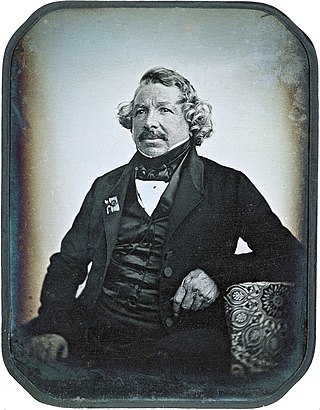
Louis-Jacques-Mandé Daguerre was a French artist and photographer, recognized for his invention of the eponymous daguerreotype process of photography. He became known as one of the fathers of photography. Though he is most famous for his contributions to photography, he was also an accomplished painter, scenic designer, and a developer of the diorama theatre.
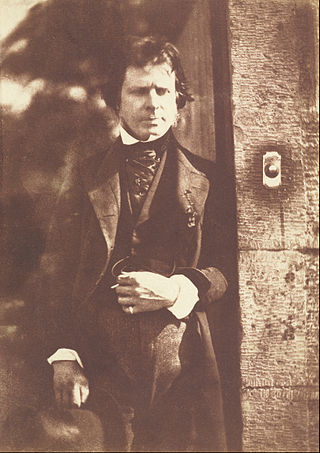
David Octavius Hill was a Scottish painter, photographer and arts activist. He formed Hill & Adamson studio with the engineer and photographer Robert Adamson between 1843 and 1847 to pioneer many aspects of photography in Scotland.

A photogram is a photographic image made without a camera by placing objects directly onto the surface of a light-sensitive material such as photographic paper and then exposing it to light.

Robert Adamson was a Scottish chemist and pioneer photographer at Hill & Adamson. He is best known for his pioneering photographic work with David Octavius Hill and producing some 2500 calotypes, mostly portraits, within 5 years after being hired by Hill in 1843.

The history of photography began with the discovery of two critical principles: The first is camera obscura image projection, the second is the discovery that some substances are visibly altered by exposure to light. There are no artifacts or descriptions that indicate any attempt to capture images with light sensitive materials prior to the 18th century.
The paper negative process consists of using a negative printed on paper to create the final print of a photograph, as opposed to using a modern negative on a film base of cellulose acetate. The plastic acetate negative enables the printing of a very sharp image intended to be as close a representation of the actual subject as is possible. By using a negative based on paper instead, there is the possibility of creating a more ethereal image, simply by using a type of paper with a very visible grain, or by drawing on the paper or distressing it in some way.
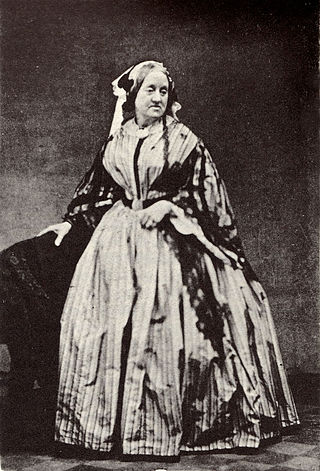
Anna Atkins was an English botanist and photographer. She is often considered the first person to publish a book illustrated with photographic images. Some sources say that she was the first woman to create a photograph.

A photo book or photobook is a book in which photographs make a significant contribution to the overall content. A photo book is related to and also often used as a coffee table book.
The following outline is provided as an overview of and topical guide to photography:

The salt print was the dominant paper-based photographic process for producing positive prints from 1839 until approximately 1860.
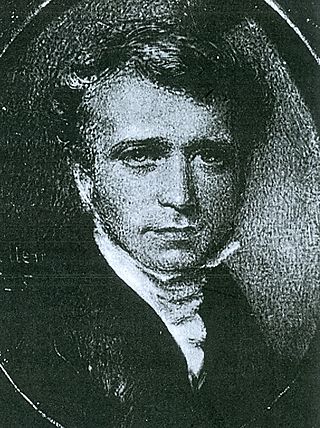
Henry Collen was an English miniature portrait painter to Queen Victoria of the United Kingdom and the Duchess of Kent. Later in life he turned to photography and was the first professional calotypist in London.
Paper texture effects in calotype photography limit the ability of this early process to record low contrast details and textures. A calotype is a photographic negative produced on uncoated paper. An important feature is that a relatively short exposure in a camera produces a latent image that is subsequently made visible by development. Then positive images for viewing are obtained by contact printing. This technique was in use principally from 1840 into the 1850s, when it was displaced by photography on glass. Skilled photographers were able to achieve dramatic results with the calotype process, and the reason for its eclipse may not be evident from viewing reproductions of early work.

Jane Martha St. John was an early English photographer. She is remembered for her calotypes of Rome and other towns in Italy, now in the J. Paul Getty Museum and the Metropolitan Museum of Art.

Peter Wickens Fry was a pioneering English amateur photographer, although professionally he was a London solicitor. In the early 1850s, Fry worked with Frederick Scott Archer, assisting him in the early experiments of the wet collodion process. He was also active in helping Roger Fenton to set up the Royal Photographic Society in 1853. Several of his photographs are in the Victoria and Albert Museum in London.

Samuel Buckle was an early English photographer.



